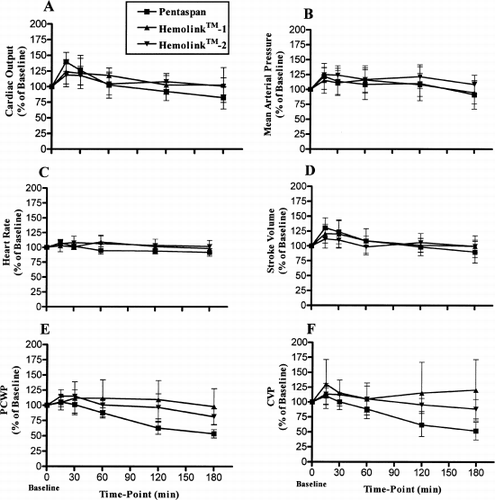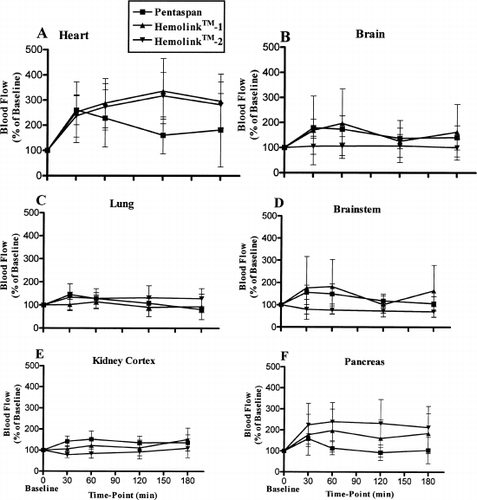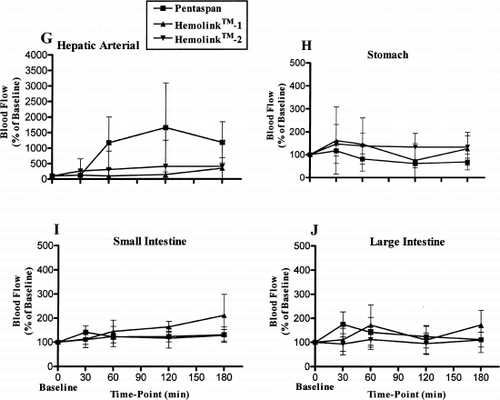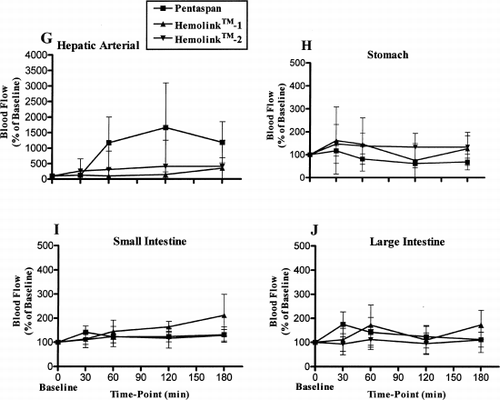Figures & data
Table 1. Hematocrit and Blood Measurements
Figure 1. Changes in cardiac output (A), mean arterial pressure (B), heart rate (C), stroke volume (D), pulmonary capillary wedge pressure (PCWP) (E), central venous pressure (CVP) (F), systemic vascular resistance (SVR) (G), and pulmonary vascular resistance (PVR) (H), and left (I), and right (J) cardiac work during the 3-hour recovery period following isovolemic exchange–transfusion with Pentaspan (squares); Hemolink-1 (triangles) or Hemolink-2 (upside-down triangles). Values are expressed as a percentage of the baseline value in the same animal prior to the exchange transfusion. Data are expressed as mean±1 SD.

Table 2. Baseline Hemodynamics in the Pentaspan and Hemolink Groups
Figure 2. Blood flow in the heart (A), brain (B), lung (C), brainstem (D), kidney cortex (E), pancreas (F), hepatic arterial (G), stomach (H), small intestine (I), and large intestine (J), during the 3-hour recovery period following isovolemic exchange- transfusion with Pentaspan® (squares); Hemolink-1 (triangles) or Hemolink 2 (upside-down triangles). Values are expressed as a percentage of the baseline value in the same animal prior to the exchange transfusion. Data are expressed as mean±1 SD. It should be noted that the measured flow to the lung represents the sum of the bronchial arterial blood flow and the very small flow through systemic–venous shunts.

Table 3. Baseline Organ Blood Flows in the Pentaspan and Hemolink Groups

